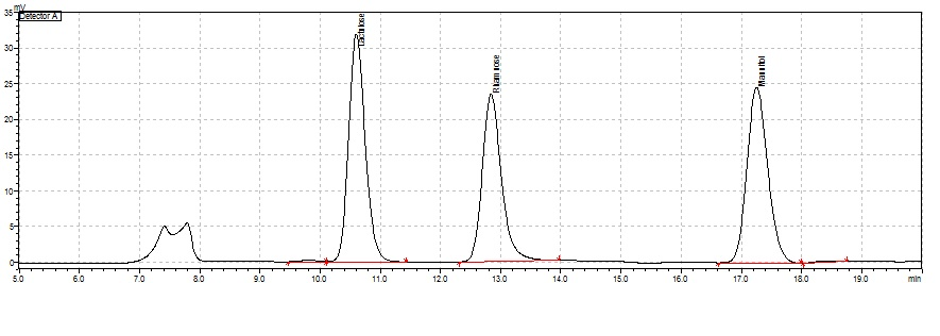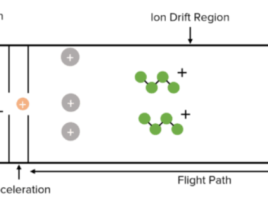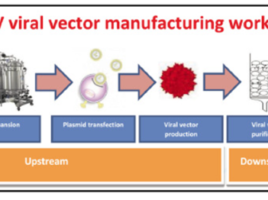GUT MALABSORPTION ASSAY
Gut permeability is an issue when there are changes and the absorption of nutrients is altered.
The Theory:
A solution of 3 sugars are given to patients at a set concentration, then either urine or blood samples are taken at set time points for analysis. The ratio of the Lactulose (disaccharide) to either Rhamnose or Mannitol (monosaccharides) indicates if and where there is a problem in the gut. These 3 sugars are not metabolised by the body, they just permeate across the gut wall.
How we are involved:
We have developed two analysis methods, based on published work, to measure these sugars in either urine or plasma. We have a lower limit of quantitation of 15µg/ml in Urine and 7.5µg/ml in Plasma, however we would advise that the actual lower levels should be 25µg/ml for urine and 15µg/ml for plasma to ensure that the lowest levels do not fall outside the calibration range. Figure 1 shows the timing and peaks for the sugars being sent round the HPLC.
We are working with Mike Hewetson from the Royal Veterinary College to adapt the plasma method for use with equine serum. At present, there is no easy way of determining where a problem is in the equine gut and it is hoped that this test will offer an alternative to submitting the horse for a surgical procedure.



